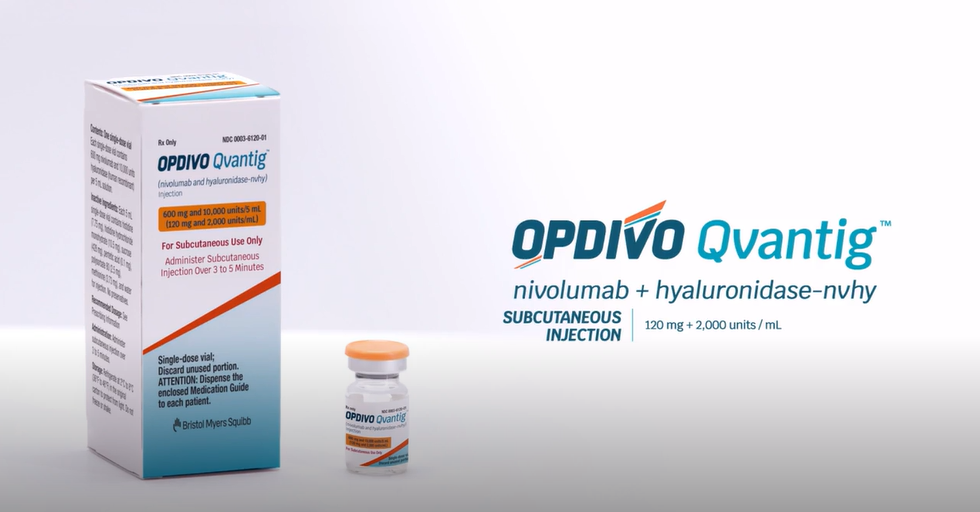| Patient baseline characteristics | OPDIVO Qvantig (n=248) | Nivolumab IV (n=247) |
|---|---|---|
| Age, Years Mean Median (range) |
64 |
64 |
| Sex, n (%) Female Male |
84 (34) 164 (66) |
76 (31) 171 (69) |
| Weight (kg) Mean Median (range) |
78 77 (35–153) |
78 77 (48–157) |
| Region, n (%) US and EU Mexico and South America Rest of world |
67 (27) |
76 (31) |
| Ethnicity, n (%) Hispanic or Latino Not Hispanic or Latino Not Reported |
93 (38) 80 (32) 75 (30) |
84 (34) 83 (34) 80 (32) |
| Prior lines of therapy, n (%) One Two |
220 (89) 28 (11) |
234 (95) 13 (5) |
| Karnofsky PS, n (%) 70 80 90 100 |
17 (7) 52 (21) 78 (32) 101 (41) |
19 (8) 49 (20) 88 (36) 91 (37) |
| IMDC Risk Group, n (%) Favorable Intermediate Poor |
48 (19) 158 (64) 42 (17) |
57 (23) 147 (60) 43 (17) |
| Prior Nephrectomy, n (%) No Yes |
45 (18) 203 (82) |
42 (17) 205 (83) |
| CNS Metastasis, n (%) No Yes |
214 (86) 34 (14) |
224 (91) 23 (9) |











